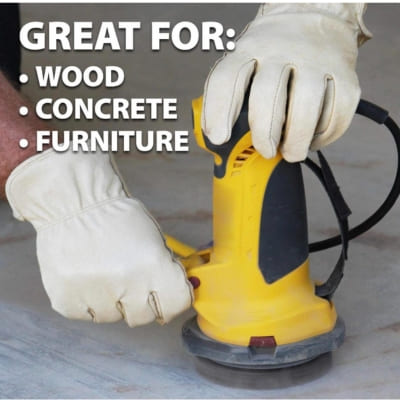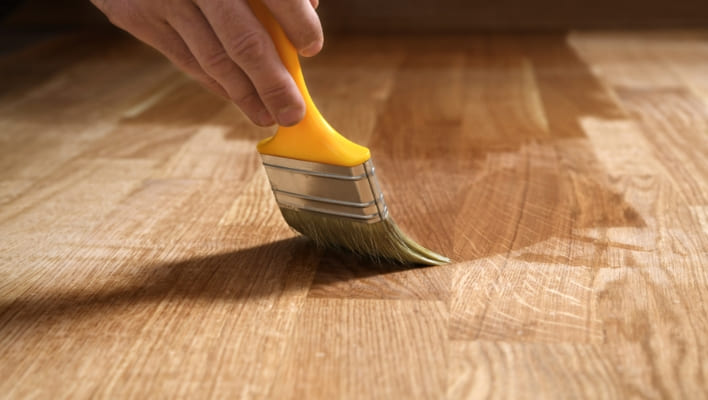As a passionate home improvement DIYer, I’ve often suffered a common headache: removing old paint. Whether it’s a worn-out wooden door, a tired-looking piece of furniture, or a weathered fence, taking off layers of paint can be a real pain.
To get rid of this headache or removing paint using chemical strippers or scrapers, I have used different sanders over the years and I am excited to share my experiences of using them that have proven to be the most effective for me in efficiently removing paint, saving both time and effort in my home renovation projects.
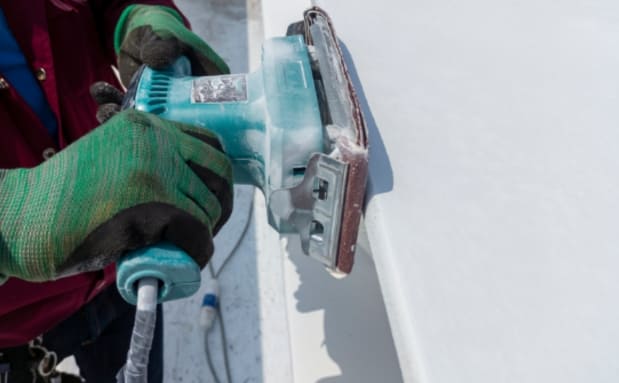
Table of Contents
- Best Sanders To Remove Paint Reviews
- Best Sanders To Remove Paint – Quick Comparison
- 1. Dewalt DCW210B Orbital Sander- Best Sander To Remove Paint From Wood
- 2. Wagner Electric Sander – Best To Remove Paint From Concrete
- 3. Makita Belt Sander – Best To Remove Paint From Furniture & Floor
- 4. Bosch GEX 125-1 AE Heavy Duty Orbit Sander – Best To Remove Paint From Metal
- 5. Surfprep 3x 4 electric sander to remove paint From Decks & Wood
- Factors To Consider When Buying The best sander for paint prep
- Think About Power
- Match Sander to Project Size
- Comfort and Ease
- Don’t Ignore Dust Control
- Price vs. Features
- Types of Sanders
- Final Thoughts – Recommendation Of sander for paint removal
- FAQS On Best Sander To Remove Paint
- what grit sandpaper for removing paint from wood
- What is the best tool for sanding paint off wood?
- What type of sander is best to remove paint?
- Martina Hitchcock
Best Sanders To Remove Paint Reviews
I have compared 5 different types of sanders for removing paint from various surfaces.
- Dewalt DCW210B – Best Sander To Remove Paint From Wood
- Wagner Spraytech Electric Sander – Best To Remove Paint From Concrete
- Makita Belt Sander – Best Sander To Remove Paint From Furniture & Floor
- Bosch GEX 125-1 Orbit Sander – Best Sander To Strip Paint From Metal
- Surfprep 3x 4 Electric Ray Sander Kit – Best To Remove Paint From Decks
Best Sanders To Remove Paint – Quick Comparison
| Paint sanding tools | Suitable Surface | Speed Range | Notable Features |
| Dewalt DCW210B | Wood | 8,000 – 12,000 OPM | Variable speed control, efficient dust extraction, rubber overmold grip, low vibrations |
| Wagner Spraytech Electric | Concrete | 2,000 RPM | Spun-fiber disc, adaptability to surfaces, ergonomic design, retractable handle |
| Makita Belt Sander | Woodworking, Furniture, Decks | 1,640 ft./min | Quiet operation, wide belt, labyrinth construction, large front grip, cord placement |
| Bosch GEX 125-1 Orbit Sander | Metal | Adjustable | Easy sandpaper changes, clean workspace, lightweight design |
| Surfprep 3x 4 Electric Ray | Decks | Adjustable | User-friendly design, compact, ergonomic handle, balanced weight |
1. Dewalt DCW210B Orbital Sander- Best Sander To Remove Paint From Wood
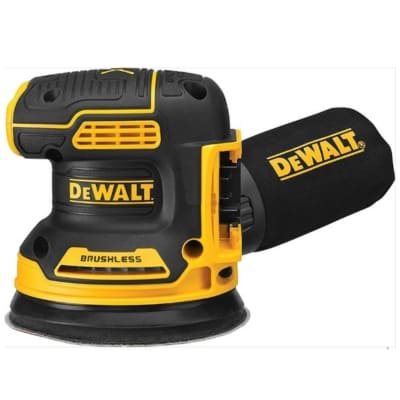
The DeWalt DCW210B cordless orbital sander left quite an impression on me as a real workhorse when it comes to removing paint from wood.
It comes as a bare tool, without any battery, but that allows you to use your existing DeWalt 20V MAX batteries if you already own some from other DeWalt tools, which is quite convenient.
One of the standout features of this sander is its variable speed control, ranging from 8000 to 12000 orbits per minute (OPM). I found it particularly useful when working on delicate tasks that required a lighter touch, as well as when I needed some extra power to remove stubborn paint layers.
The replaceable 8-hole hook-and-loop pad allows for quick and easy sandpaper changes, for efficiency during a project. Plus, it’s designed to hold the sandpaper securely, preventing it from slipping during use.
Its textured rubber overmold grasp reduced fatigue and made the sanding process more enjoyable, allowing for precise control.
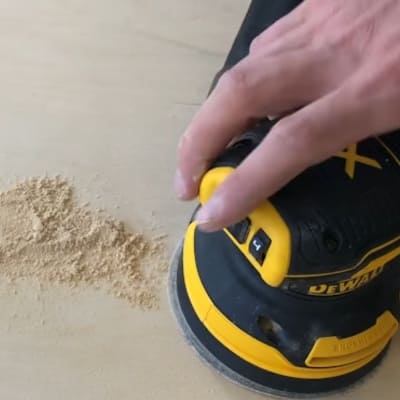
This sander does a remarkable job of keeping your workspace clean. I was amazed by how effectively it picked up fine dust using its dust bag. The 8-hole pad design aids in efficient dust extraction. I set the sander to a moderate speed, around level five, and it worked amazingly well at picking up most of the fine dust, which is a huge benefit for anyone concerned about dust management.
Compared to other orbital sanders I’ve used, the DCW210B produces noticeably low vibrations improving the quality of the finish by reducing the chances of visible sanding marks or uneven surfaces.
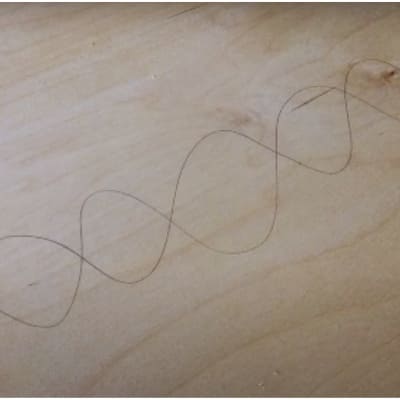
I especially noticed this when I was working to remove pencil marks from plywood. The sander smoothly and effectively removed the pencil marks without causing any damage or leaving behind unsightly scratches.
Considering the downside, the DeWalt DCW210B’s ergonomics can be frustrating. I found it challenging to access the on/off switch with one hand and changing the battery required a two-handed effort, which can be a hassle during use. You can also buy it at Ebay.
Expert Advice: When removing paint from delicate wooden surfaces, begin sanding at a lower speed and gradually raise it. This prevents over-sanding and potential wood damage.
Pros
- Compatibility convenience of DeWalt 20V MAX batteries
- Best cordless sander
- Variable speed control for versatility
- Replaceable 8-hole hook-and-loop pad for quick sandpaper changes
- Reduces fatigue
- Efficient dust extraction maintaining a clean workspace
- Low vibrations with minimal sanding marks
Cons
- Frustrating ergonomics, with a challenging on/off switch
- Two-handed battery change.
2. Wagner Electric Sander – Best To Remove Paint From Concrete
Another great pick you can go for is Wagner spraytech electric sander for paint removal. Featuring high-performance, spun-fiber disc, this sander spins at a rapid 2,000 RPM. When I started using it on my concrete surface, it seamlessly stripped away the old, chipped paint (either chalk, acrylic or any other paint) with remarkable precision. It made the paint vanish without the need for excessive pressure.
Wagner painteater sander is unique in that it can conform to a variety of surfaces. When working on concrete, I had concerns about damaging the underlying material, but this sander’s design ensured that I had ultimate control. It glided smoothly, adapting to the surface, and I didn’t have to worry about accidentally hurting delicate areas.
Moreover, the ergonomic design of this sander is a savior allowing me to switch with ease between one or two-handed operation. The soft-grip and retractable handle cover made it comfortable to hold, even during extended use. Also, I could work longer without feeling strained.
After the old paint was removed, I could see the concrete surface was perfectly prepped for a new coat. With the old paint completely gone and the surface smooth, I knew that the new paint would adhere better, ensuring a longer-lasting finish. This was a significant benefit of using the PaintEater.
Besides its amazing advantages, I had to use an extension cord because the power cord is short, and it might get in your way while working. Make sure to hold it tight because it’s quite powerful.
Pros
- Concrete paint removal with spun-fiber disc
- Excellent adaptability to different surfaces
- Best Sander for Exterior Paint Removal
- Simple one-handed or two-handed operation
- Comfortable retractable handle and soft-grip
- Prepares surfaces for better paint adhesion
Cons
- Short power cord may require an extension cord for convenience
- Requires a secure handling due to its powerful performance
Pro Tip: For great results on concrete, apply a light amount of water to the surface before sanding. It helps control dust and keeps the disc cool, prolonging its lifespan.
3. Makita Belt Sander – Best To Remove Paint From Furniture & Floor
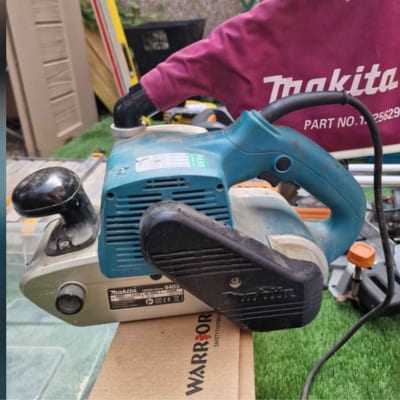
Whether you want to remove paint from your furniture, floor, walls or strip paint from fences or decks, a Makita 9403 Belt Sander can be an excellent tool for the job. The top-notch feature for me was its noiseless running. At only 84dB, I found it quietest in its class. While I was working, there was no longer any ear-piercing noise; I’m sure my neighbors would appreciate it as well.
The 4″ wide belt is a real workhorse, churning at a speed of 1,640 ft./min. It efficiently stripped away layers of old paint from my floor, making the job quick and painless, saving me a lot of time and effort.
Construction of the labyrinth is a smart feature, sealing the bearings and motor from contamination. This is important for the longevity of the sander, and it gives me peace of mind knowing that it’s built to last.
Now, let’s talk about comfort. The large front grip is perfectly positioned for operator comfort. I didn’t experience discomfort or pain during extended sanding sessions. Plus, having the cord located on the upper portion of the handle is a small yet thoughtful detail that adds to the overall convenience.
Practically speaking, one of the most useful features is the 360° swiveling dust bag. It might sound trivial, but it makes a huge difference in keeping my workspace clean. No more constant interruptions to empty the bag, and the cleaner workspace means a more efficient sanding process.
The Makita 9403 4″ x 24″ Belt Sander offers a larger dust bag, making debris collection convenient. If you prefer a slightly smaller option, the 3″ x 21″ version is essentially the same, just a tad smaller and a bit more budget-friendly. Both models deliver reliable sanding performance.
What really sets this belt sander apart is its unique design that allows flush sanding, saving me a ton of effort and time in those corners and tight spaces.
There were some challenges that I got to tackle with the Makita Belt Sander. The belts tend to shift frequently, requiring constant recentering. The trigger and lock mechanism are a bit tricky to use comfortably, and the tool generates static electricity, making it necessary to keep a hand on its frame for safety.
Pros
- Noiseless session
- Best belt sander
- Speed control for breeze
- Labyrinth durable construction
- Large front grip and clever cord placement for comfort
- Clean workspace with 360° swiveling dust bag
- Unique design allows flush sanding to tight spaces
Cons
- Belts tend to shift and require constant recentering.
- The trigger and lock mechanism can be challenging to use comfortably.
Pro Tip: When using the belt sander on walls, move it in straight, overlapping passes to avoid creating uneven areas. Ensure the sanding belt is properly aligned before starting for consistent results.
4. Bosch GEX 125-1 AE Heavy Duty Orbit Sander – Best To Remove Paint From Metal

Using the Bosch GEX 125-1 Orbit Sander to remove paint from my car was an incredible experience for me. Its competitive feature was the easy attachment and detachment of sanding paper, thanks to the hook-and-loop fastening system. No more struggling with fiddly setups – just a quick click, and I was ready to get to work.
The Click & Clean System, promising three significant benefits, truly delivered. It kept my workspace remarkably clean, capturing and containing dust and debris effectively. Cleanup was simplified as a result, and the working environment was also made healthier.
The inclusion of the microfilter box was a thoughtful touch that further enhanced dust collection.
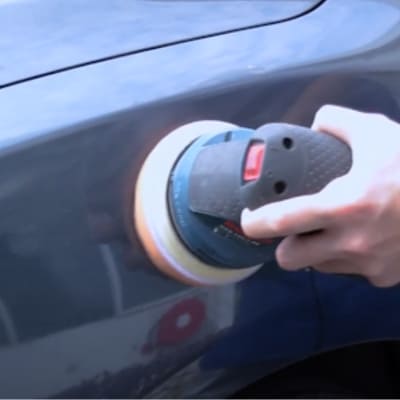
The ability to select the sanding speed allowed me to adjust the tool’s performance to the specific requirements of my car’s surface. I needed extra power for stubborn paint layers and its speed pre-selection feature provided the control for exceptional results.
Plus, the sander’s lightweight design, at just 1.3 kg, made the entire process comfortable, even during extended periods of paint removal reducing fatigue as a significant advantage.
When using the Bosch GEX 125-1 AE Sander on surfaces like cars or metal, I noticed that it generates significantly more noise compared to quieter alternatives such as the Makita Belt Sander. Discover the best method for removing paint from metal surfaces.
Pros
- Easy sandpaper changes
- Clean and healthy workspace with the Click & Clean System
- Adjustable sanding speed for personalized performance
- Lightweight design for extended use
Cons
- Makes more noise compared to some other sanders
- Best suited for metal and car surfaces
Pro Tip: For metal surfaces, consider using finer-grit sandpaper to avoid leaving deep scratches. Start with a coarser grit and progressively switch to finer ones for a smoother texture.
5. Surfprep 3x 4 electric sander to remove paint From Decks & Wood
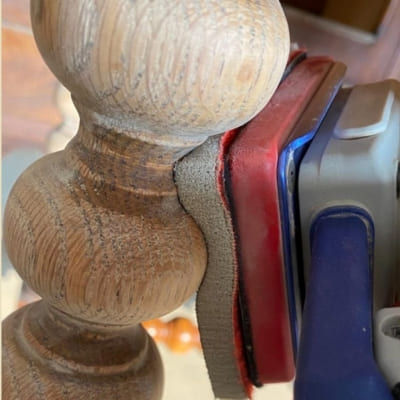
I recently restored my deck paint and used Surfprep electric sander to remove the old, chipped paint from the deck, and this sander proved to be a trusty companion throughout the entire process.
I’ve used other sanders in the past that required constant adjustments and had a steep learning curve. With the SurfPrep 3×4 Electric Ray Sander, it was a breeze from the get-go. Its user-friendly design is perfect for newbies and experienced DIYers like me.

The most remarkable thing about this kit is the SurfPrep 3×4 Electric Ray Sander itself. It’s lightweight, compact and incredibly easy to handle. I was initially concerned about the potential strain and discomfort on my arms and hands, but this sander’s design seems to have considered those issues.
The ergonomic design and balanced weight distribution made it feel like an extension of my arm rather than a heavy tool I had to wrestle with.
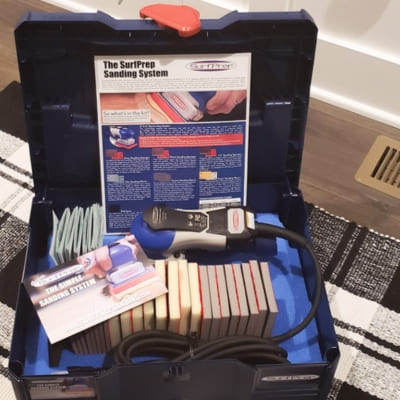
The variety packs of Pro Foam & Film Abrasives that come with the kit are designed to minimize dust and provide a consistent sanding surface.
Unlike Dewalt sander in comparison, getting into the wood grooves is one of the drawbacks of Surfprep sander. The sander’s design, which is excellent for larger flat surfaces, made it challenging to reach those tight and narrow grooves between the deck boards. Even with the specialized accessories included in the kit, I found it difficult to achieve the same level of precision and thoroughness in these hard-to-reach areas.
Helpful Resource: Explore the detail guide on sanding versus stripping wood furniture.
Pros
- A user-friendly design
- Easy to handle and balanced weight distribution reduce arm and hand strain
- Variety packs of Pro Foam & Film Abrasives minimize dust and provide consistent sanding results
- Excellent for sanding large flat surfaces
- Effective for edge sanding, corners, and tight spots
Cons
- Challenges in reaching tight and narrow grooves between deck boards
- Limited precision in delicate areas
Pro Tip: Use a detail sander or handheld sanding block in conjunction with the Surfprep sander when removing paint on deck grooves or tight spots. This combination ensures a more thorough and precise removal.
Factors To Consider When Buying The best sander for paint prep
Think About Power
Make sure your sander has a motor with enough power (measured in amps) and the right speed (OPM or FPM) for your job. Stronger motors are needed for tough tasks like removing paint.
Match Sander to Project Size
Choose the right type of sander based on how big and what kind of work you’re doing. Belt sanders are great for large areas, while orbital sanders are more versatile and good for smaller, precise jobs.
Comfort and Ease
Pick a sander that feels comfy to hold and use. The easy to control sanders are appropriate to operate to avoid hand fatigue. You can prefer one with a cord or cordless.
Don’t Ignore Dust Control
Make sure your sander has a good way to collect dust. It keeps your workspace clean and you healthy. Check the dust bag size and if it can connect to custom dust collection systems.
Price vs. Features
Figure out your budget and what features you really need. Belt sanders tend to cost more than orbital ones, so find one that’s a good balance of cost and what it can do.
Types of Sanders
Get to know the different types of sander.
- Belt Sanders: Powerful and durable, belt sanders are best for rapid material removal on large, flat surfaces such as tabletops and floors. However, their aggressive nature can be challenging to control and may leave visible sanding marks if not used carefully.
- Orbital Sanders: Orbital sanders are versatile and excel at providing a smooth surface, making them great for general sanding tasks. Their circular motion minimizes swirl marks but may take a bit longer for heavy material removal.
- Detail Sanders: Detail sanders, often called mouse sanders or palm sanders, are made for precise paint removal work in tight spaces and corners. They are excellent for refinishing furniture or reaching intricate areas, but they may not be as efficient for larger surfaces.
Final Thoughts – Recommendation Of sander for paint removal
I have compared 5 sanders to remove paint from different types of surfaces as per my experience. However, if you are still confused which one to choose for your project, I would recommend you Dewalt DCW210B – the best sander overall due to its versatility, variable speed control for different tasks, efficient dust extraction, and low vibrations, making it suitable for a wide range of DIY projects.
FAQS On Best Sander To Remove Paint
what grit sandpaper for removing paint from wood
For removing paint from wood, it’s best to start with coarse-grit sandpaper to quickly strip away the paint. A good initial grit range is typically between 60 and 80 grit. Once you’ve removed most of the paint, you can progress to finer grits like 120 or 150 to smooth the wood surface and prepare it for finishing or repainting.
What is the best tool for sanding paint off wood?
When it comes to sanding paint off wood, you have two excellent options: an orbital sander and a palm sander. Orbital sanders are bigger and work faster at paint removal but can be a bit challenging to handle. On the other hand, palm sanders are more compact and easier to control, although they may take a bit more time to complete the paint removal process.
What type of sander is best to remove paint?
The ideal sander for paint removal is a robust handheld machine capable of efficiently tackling tough surfaces. Random orbital sanders and belt sanders both fit the bill perfectly. These types of sanders are highly effective for the task, making them top choices for paint removal due to their power and versatility.

Martina Hitchcock
Martina Hitchcock is a versatile author with expertise in different fields. As a paint sprayer expert, she has in-depth knowledge of paint spraying techniques, tools, and equipment. Martina is also an experienced home remodeler who has worked on various projects, including kitchen and bathroom renovations, flooring installations, and room additions. Her knowledge of home improvement and remodeling is extensive, and she enjoys sharing her insights and tips with readers. You can follow her on Facebook.

